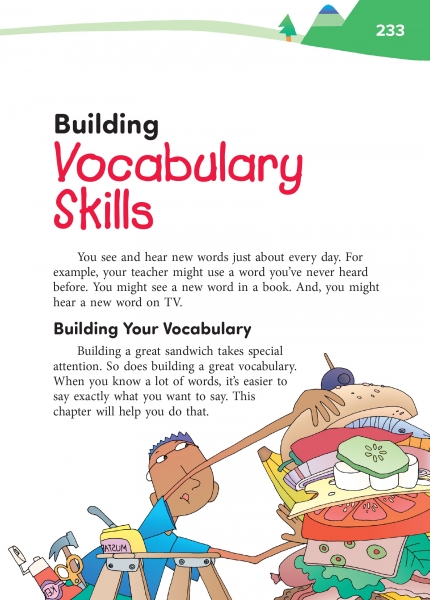Page 233 from

Start-Up Activity
On the board, write the word "pimento" and the word "sardine." Ask students if they know what these words mean, and if they do, have them give definitions. Then ask them to find a pimento and a sardine in the picture of the sandwich on page 233. (The pimento is the red pepper and the red dots in the green olives in the slice of meat, and the sardine is the fish lying under the bun.) Now that students have learned the words "pimento" and "sardine," they can recognize them, call them by name, and maybe even put them in a sandwich (or not!).
Help students understand that building vocabulary gives them power. By learning these two words, they suddenly can recognize something they've never paid attention to before. Vocabulary opens the world to readers, speakers, and writers. Tell students they are about to learn many strategies to help build their vocabulary.
Think About It
“Vocabulary is a matter of word-building as well as word-using.”
—David Crystal

Start-Up Activity
On the board, write the word "pimento" and the word "sardine." Ask students if they know what these words mean, and if they do, have them give definitions. Then ask them to find a pimento and a sardine in the picture of the sandwich on page 233. (The pimento is the red pepper and the red dots in the green olives in the slice of meat, and the sardine is the fish lying under the bun.) Now that students have learned the words "pimento" and "sardine," they can recognize them, call them by name, and maybe even put them in a sandwich (or not!).
Help students understand that building vocabulary gives them power. By learning these two words, they suddenly can recognize something they've never paid attention to before. Vocabulary opens the world to readers, speakers, and writers. Tell students they are about to learn many strategies to help build their vocabulary.
Think About It
“Vocabulary is a matter of word-building as well as word-using.”
—David Crystal